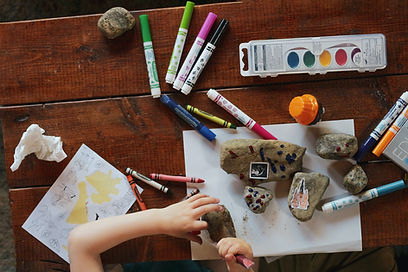
Adaptive Learning
Some students with Autism may find it challenging to interact with others. The uncertainty about how to communicate or connect can make social situations stressful or uncomfortable. Common challenges include understanding social norms, initiating or maintaining conversations, recognizing personal space, and interpreting facial expressions or emotions. These difficulties can sometimes lead to feelings of isolation, frustration, or anxiety, especially in group settings like classrooms or playgrounds.

Social interactions can be practiced and strengthened during social structured interactions such as guided play, small-group activities, or social skills groups—can help students develop confidence and comfort when engaging with others. Visual supports, modeling, and role-playing are also ways to teach social expectations and encourage positive communication.
This month, we will look at these social challenges, how it may impact their daily lives, and resources for parents to help your child build confidence in social situations.
Social Challenges
Students with Autism may experience difficulties such as:
-
Understanding and Using Nonverbal Cues
Students may struggle to read facial expressions, notice tone of voice, or understand how to appropriately respond to the emotions of others.
-
Literal Interpretation
During conversations students may interpret language literally and may miss sarcasm, jokes, or figurative language.
-
Difficulty with Back-and-Forth Conversation
They may find it difficult initiating, maintaining, or following a conversation.
-
Social Skills
Some children have trouble with taking turns, speaking excessively during a conversation, or interrupting during conversations.
-
Friendships
Some children can have difficulty sustaining friendships either due to difficulty empathizing, building rapport with others, or emotional dysregulation in uncertain social settings.

-
Understanding Social Norms
Students may not always recognize unspoken rules of behavior, such as how to join group activities, wait in line, or appropriately greet others.
-
Perspective Taking
Children may struggle to see a situation from another person’s point of view, making it harder to understand others’ intentions or feelings during social exchanges.

-
Coping with Change or Unexpected Situations
Social environments can be unpredictable, and students with Autism may become anxious or withdrawn when routines change or when new people are introduced.
-
Recognizing Personal Boundaries
Students might not fully understand personal space or may unintentionally engage in behaviors that seem intrusive, such as standing too close or touching without permission.
-
Managing Emotions in Social Settings
Social interactions can be overwhelming, leading to frustration or emotional outbursts when communication breaks down or expectations aren’t clear.
The Impact
No matter our age, many of us remember the anxiety we felt as a child trying to make a friend. When a child has a desire to interact with others but isn’t sure how, the impact can be significant.
-
Isolation
Due to the struggle of initiating or maintaining conversation, students may have a hard time making friends or joining group activities, or sports. This can lead to feelings of loneliness.

-
Mental Health
With the task of navigating social situations it can lead to anxiety, stress, or even depression.
-
Self-Esteem and Confidence
Repeated social difficulties can cause children to doubt themselves, leading to low self-esteem and reluctance to try new activities.
-
Emotional Development
If a child struggles to communicate, cooperate, or understand social cues it can delay the development of self-awareness, empathy, and emotional regulation.
-
Family and Peer Relationships
Social challenges can also strain family dynamics and peer relationships. Siblings, classmates, and friends may not always understand a child’s behavior, which can lead to misunderstandings or exclusion.
-
Future Opportunities
As children grow, social skills become more essential for interviewing for positions and working with others on a job. It can also have an effect on their ability to achieve independence and succeed in adulthood.
How You Can Support Your Child
Resources
This youtube channel provides learning videos for children with Autism. The main character Buddy, who represents a boy with autism spectrum disorder, learns new social skills with the help of social stories, visual schedules, family, friends, and teachers. Students will get to watch and learn from Buddy’s real life social experiences.
For middle and high school students you can try VOISS. The acronym stands for Virtual realities to Integrate Social Skills. The program offers up to 140 scenarios that allow students to walk through social stories and are presented with social scenarios where they need to problem solve interactions with characters. As the student picks their response to the situation, VIOSS offers feedback and potential ways to problem solve in the future. Such examples include how to make friends, comfort a friend, deal with bullying, or present and receive feedback from others.
AMW
Train up a child in the way he should go: and when he is old, he will not depart from it.
Proverbs 22:6 KJV